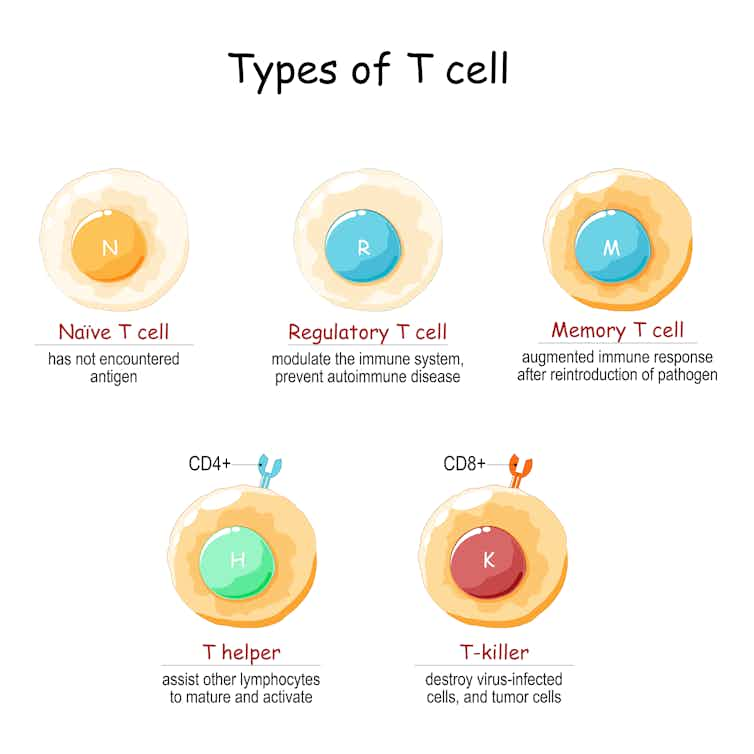
Regulatory T cells, or Treg cells, are one of at least five major types of T cells. ttsz/iStock via Getty Images Plus
How diet interacts with Treg cells
Diet also plays a powerful role in regulating Treg cells. Compounds known as indoles, found in vegetables from the cabbage family such as broccoli, cabbage and cauliflower, can activate Treg cells and help prevent gut inflammation. These compounds also work by stimulating the aryl hydrocarbon receptor, which boosts Treg numbers and activity.
Another way diet can influence Treg cells is through the regulation of the microbes that live in the gut.
The gut has trillions of microbial residents, both benefical and harmful. Previous research found that Treg cells in the gut play a crucial role in maintaining gut homeostasis – the dynamic balance between microbiota and immune cells found in the gut. Any disturbance leading to loss of Treg cell function can lead to hyperactivation of other immune cells in the gut. This can trigger inflammation in which the immune cells destroy the lining of the intestine, leading to conditions such as inflammatory bowel disease.
Other naturally occurring substances – such as naringenin, a chemical abundant in citrus fruits, and epigallocatechin-3-gallate, a compound found in green tea – also activate the aryl hydrocarbon receptor and promote Treg development.
A fiber-rich diet supports the growth of beneficial gut bacteria. This bacteria ferments fiber into short-chain fatty acids that enhance Treg cell function and help maintain gut health. Probiotic bacteria also increases Treg cell populations, thereby reducing inflammation.
In addition, dietary tryptophan – an amino acid found in foods such as poultry, eggs, tofu and seeds – is metabolized into compounds that activate the aryl hydrocarbon receptor, further boosting Treg cell activity and protecting against gut inflammation.
By contrast, a Western diet high in fat, sugar and processed foods disrupts the balance of gut bacteria. This, in turn, reduces the population of microbes that support Treg cells and promotes a more inflammatory environment in the gut.
Keeping Treg cells in harmony
Scientists like us and many others are working to understand the processes involved in maintaining the delicate balance of Treg cells that are influenced by all of these outside factors. The goal is to learn how Treg cells and other immune cells can be kept in equilibrium – strong enough to defend against infections and cancer yet restrained enough to prevent autoimmune and inflammatory diseases.
The profound environmental influence on Treg cell development and function makes understanding these interactions crucial for defining the fine line between health and disease.